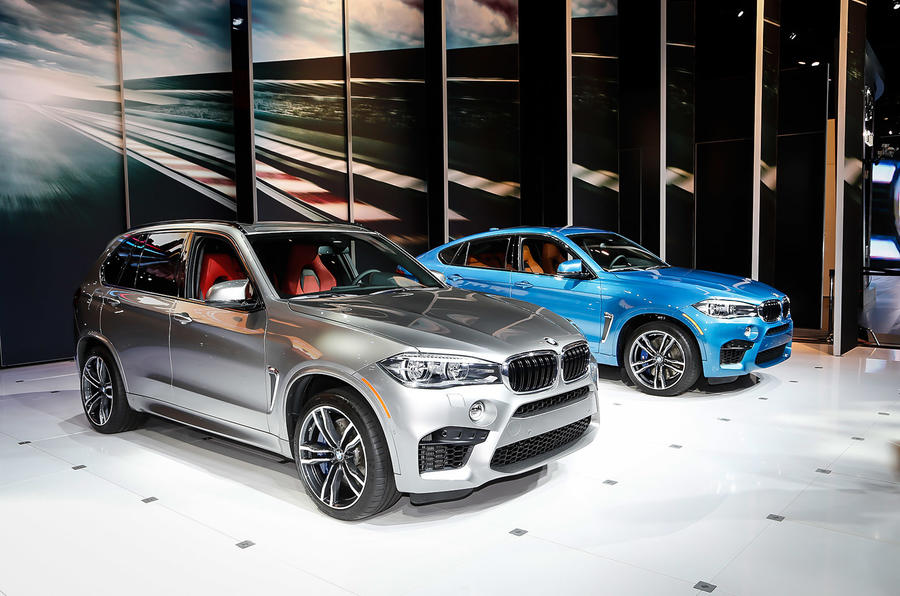BMW’s M division has upped the stakes in the performance SUV ranks with the unveiling of its rapid second-generation X5 M and X6 M.
The new SUVs – which have made their public debuts at the LA motor show prior to the start of UK sales in April next year – receive the same twin-turbocharged 4.4-litre direct injection petrol engine used by the BMW M5 and M6.
That means both models come with greater power and torque, enhanced straight line accelerative ability, a slightly higher top speed and reduced fuel consumption and emissions.
As in the existing M5 and M6, the 90-degree V8 provides the new X5 M and X6 M with 564bhp at 6000rpm. However, changes to the induction system bring 52lb ft more than in BMW’s M division’s existing performance saloon and coupé duo, with 553lb ft developed between 2200 and 5000rpm.
That's a 17bhp and 52lb ft increase on the similarly configured engine that powered the first generation X5 M and X6 M. It is also 51bhp more and the same torque rating than the twin-turbocharged 4.8-litre V8 direct injection petrol engine used by the recently facelifted Porsche Cayenne Turbo, and 46bhp and 37lb more than the twin-turbocharged 5.5-litre V8 of the Mercedes-Benz ML63 AMG.
Channeling the prodigious reserves is an eight speed automatic gearbox featuring stop/start and brake energy recuperation functions. It replaces the earlier six-speed unit used by the earlier X5 M and X6 M and is allied to a permanent multi-plate clutch four-wheel drive system.
The system is capable of apportioning up to 100 per cent of drive to either the front or rear axle and features electronically controlled torque vectoring as part of a so-called Dynamic Drive package.
Tipping the scales 30kg under their predecessors at 2275kg and 2265kg respectively, the new X5 M and X6 M possess a claimed 0-62mph time that has improved by 0.3sec on the first-generation models, at 4.2sec. The nominal top speed remains limited to 155mph, although owners can choose to have it raised to 174mph.
By comparison, the 2185kg Cayenne Turbo possesses claimed figures of 4.2sec and 174mph, while the 2345kg ML63 AMG has performance claims of 4.8sec and a limited top speed of 155mph.
BMW puts the combined cycle consumption and average CO2 emissions for both of its new M division SUVs at 25.5mpg and 258g/km. This represents a 5.2mpg and 67g/km improvement on the old X5 M and X6 M.
Distinguishing the new models from less powerful versions of the third-generation BMW X5 and second-generation BMW X6 is a new front bumper with large air intakes for added cooling, painted wheel arch flares, revised front fenders with a stylized air duct to extract air from the front wheel houses, chunkier door sills and a deeper rear bumper with four chromed tailpipes.










































Add your comment
Rubbish
So that is 247BHP/Tonne,bah,
That's funny...